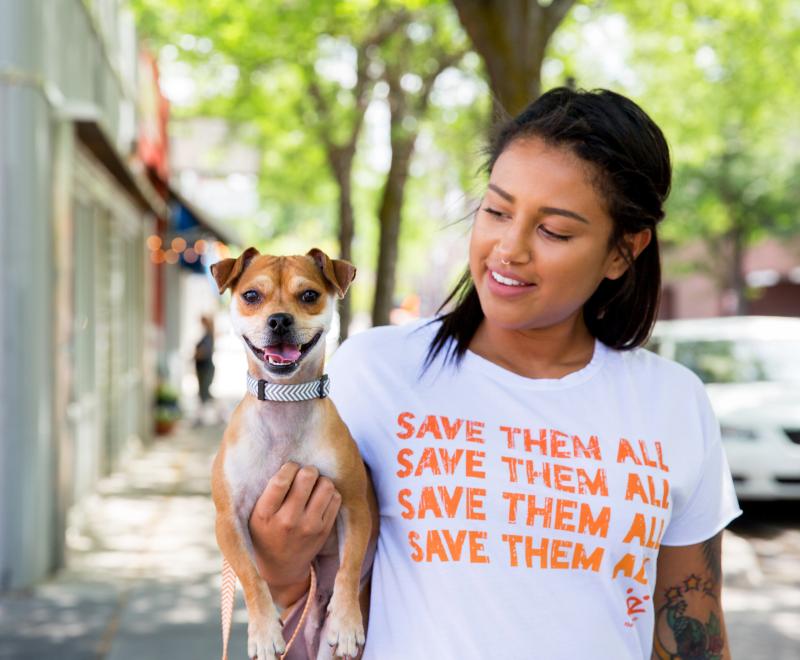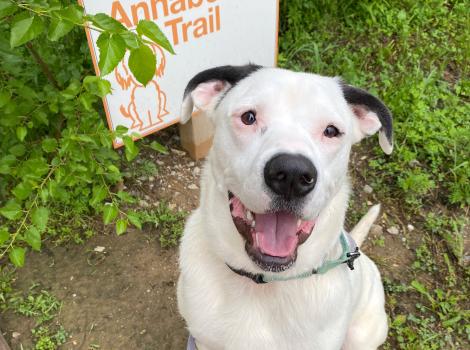Faces of No-Kill: Kitten with serious head wound gets custom helmet

The Faces of No-Kill series highlights stories about pets who have become a statistic in the best way. These are just a few of the many pets who once slipped into danger; they lost their homes, they had health or behavioral challenges, their families couldn’t care for them, or all the above. But each one of them got assistance, and today they are thriving thanks to an animal shelter program that helped them rather than killed them. Best Friends’ goal is for every animal shelter and every community to reach no-kill by 2025. The story below is just one example of why it’s so important.
Who doesn’t love an adorable kitten wearing a helmet? That piece of protective equipment on her noggin is what saved the life of a little cat named Turtle. Turtle was part of a litter of kittens who came to Jasper Animal Rescue Mission (JARM) in South Carolina with their mama. While several of the kittens and the mother had scars and abrasions indicating they had been through some kind of trauma, Turtle’s head wound was significant.
“When JARM staff realized Turtle would need more care than they had the resources to provide, they reached out to us at the Humane Society for Greater Savannah (HSGS) for help,” says Rachel Bryan, HSGS medical operations manager.
[Miracle cat's healing journey]
Best Friends’ goal is for all shelters and communities to reach no-kill by 2025, and that means organizations working together to save more pets who need extra time or care — pets like Turtle.
After consulting with shelter veterinarian Dr. Jordan Gentry, HSGS decided they would take in the whole kitty family and do whatever they could to save Turtle’s life.
“She had survived this long, and we were determined to give her the chance to not only survive but thrive,” Rachel says. “And we decided there was no other name that suited her more perfectly than Turtle because of the shell-like scab her body developed to protect the wound.”
“HSGS knew there was no guarantee Turtle would make it, as any shelter professional can tell you just how fragile even healthy kittens can be,” says Gina Burrows, Best Friends regional strategist for the East Coast. “Even though the outcome was unknowable, opting to try to save her life is the no-kill philosophy in action.”

Tiny helmet, big triumph
The vet developed an intensive daily treatment plan of antibiotics and wound care for Turtle, who also had damage to her eye that eventually led to the development of glaucoma. While Turtle’s injury slowly healed, her head needed additional protection that would stand up to the rambunctiousness of a growing kitten. The solution came courtesy of Baby Kitten Rescue, a Los Angeles-based rescue group specializing in neonatal kittens and cats with special needs.
“I follow them on Instagram, and they have a special-needs kitten named Otter who wore a tiny protective helmet until he could have surgery to repair a birth defect on his skull,” says Rachel, who decided to foster Turtle at home to keep a closer eye on her. “I messaged the founder to ask where she got the helmet, and she put me in touch with the volunteer who built it. This isn’t someone who is in the medical field; he’s just skilled in 3D printing and engineering, and he has a big heart for special-needs kittens.”
[Blind cat sees the good in everything]
Building a miniature helmet to fit Otter’s head was a new challenge for the volunteer, and he had to create a few versions to get it right. By the time Rachel got in touch with him, though, he was a pro at it.
“I shared Turtle's story with him, and he had two helmets made and in the mail to me in two days!” Rachel says. “Having a helmet worked great for her, helping to keep the wound from getting scraped and bumped and allowing it to heal.”
That meant Turtle was ready to be spayed and put up for adoption, but after many weeks of taking care of the sweet kitten, Rachel was unable to let her go. So Turtle became the sixth non-human resident of her household, which also includes two dogs and three other cats.
“Many of our staff foster, but sometimes an animal comes along who you can’t say goodbye to,” Rachel says. “This was one of those special cases.”
Now that she’s healthy and has fully settled into her new home, the only traces of Turtle’s traumatic early days are a small bald patch on her scalp and the loss of one eye due to her glaucoma. The days of wearing her helmet are gone, too, leaving her to be the rambunctious kitty she was always meant to be.

Let's make every shelter and every community no-kill by 2025
Our goal at Best Friends is to support all animal shelters in the U.S. in reaching no-kill by 2025. No-kill means saving every dog and cat in a shelter who can be saved, accounting for community safety and good quality of life for pets.
Shelter staff can’t do it alone. Saving animals in shelters is everyone’s responsibility, and it takes support and participation from the community. No-kill is possible when we work together thoughtfully, honestly, and collaboratively.






